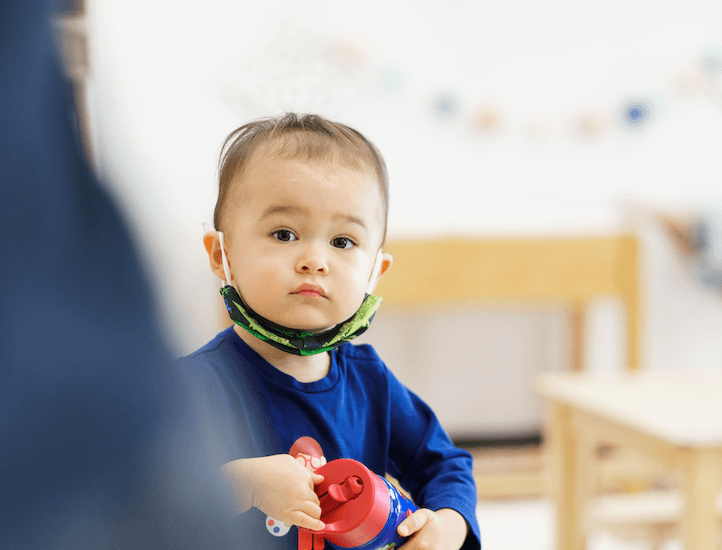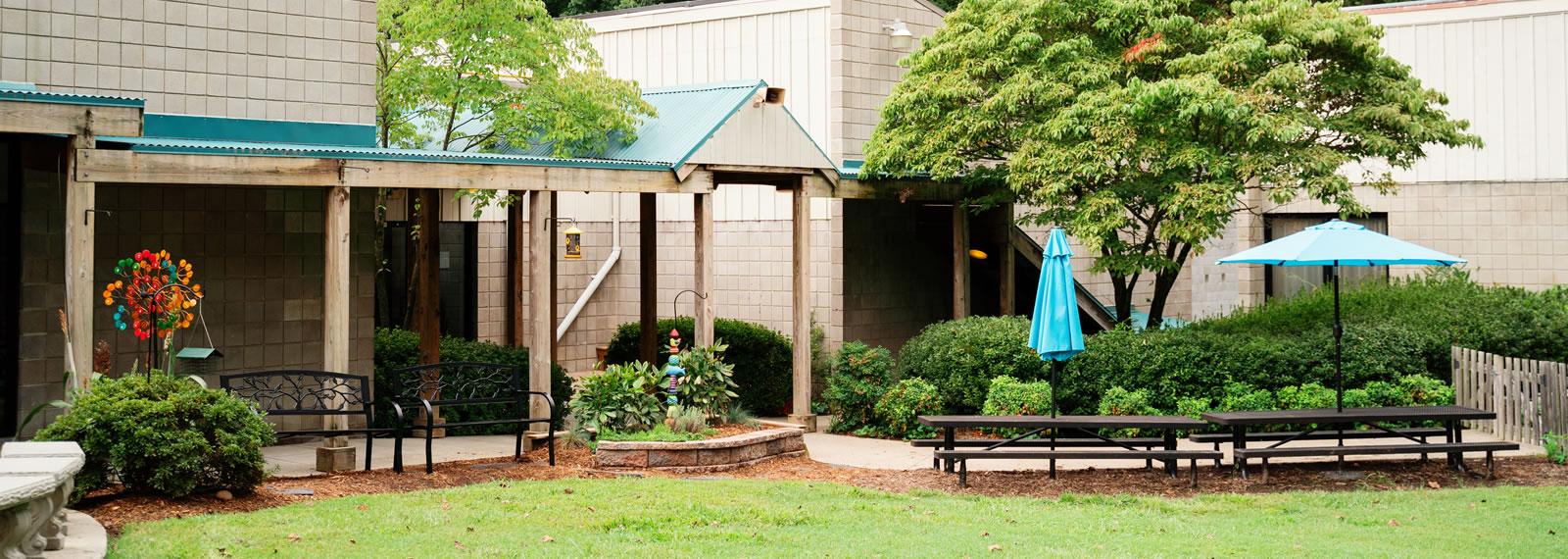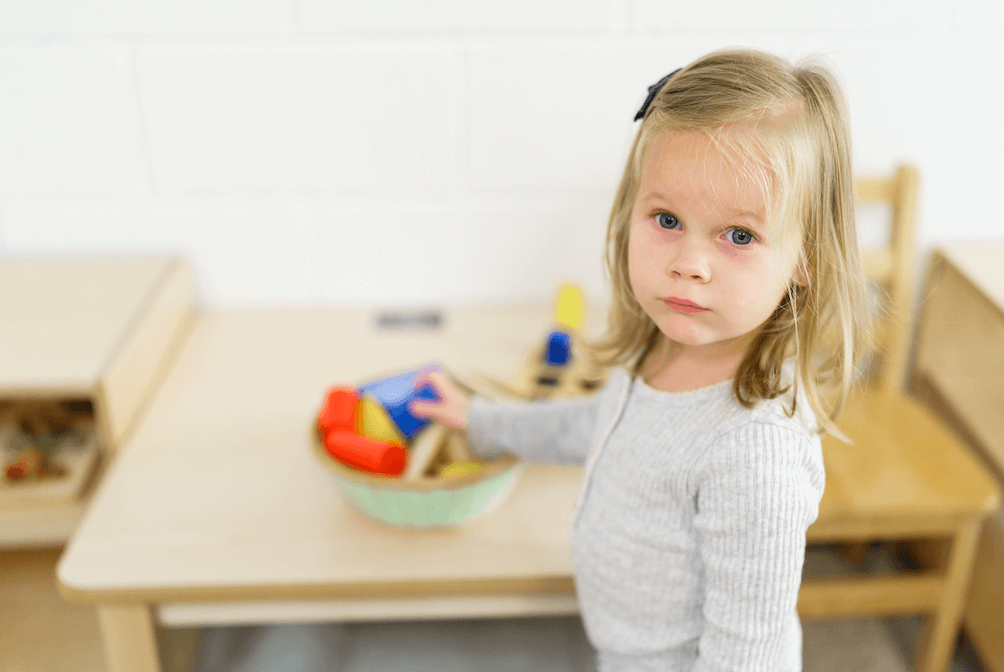Participating in a running event, gymnastics competition, or academic decathlon all require specific training. But when it comes to natural bodily functions, it’s time to say goodbye to antiquated terms like potty training and toilet training.
Toilet Learning
“Toilet learning” or “toileting” are appropriate words to describe the process a child goes through when transitioning out of diapers and into using the bathroom. Consistent with the Montessori Method, approach toileting as a shared learning experience. If the idea of collaborating with a toddler has you running for the door, take a moment and keep reading—it’s not as strange as it sounds.
Potty Preamble
Introducing the concept of using a toilet can take place earlier than most people think, and it doesn’t start with placing a toddler on a toilet or small potty. Beginning as young as 13–15 months of age, children can accompany parents and siblings to the bathroom to observe. The next time you need to use the bathroom, ask your child if they want to come with you. Use language that is factual and relaxed as you talk about bathroom use as part of daily life. On the surface, it may not seem like they’re paying attention. But as every parent knows—modeling is a simple and effective way to teach children new things. The more a child is exposed to an activity, the more they absorb.
Readiness Assessment
When is a child ready to try using the toilet? Every toddler’s development is unique, and the Montessori Method recommends a parent follow the child’s lead. If they are adamantly against it, pull back and reintroduce the issue later. Toileting will become more challenging after the age of 2 ½, however, when children begin to assert more control.Verbalizing the need to use the toilet typically takes place later. Look for the following early signs to assess your child’s readiness:
- Exhibiting an interest in copying parents’ bathroom habits
- Maintaining dry diapers over a sustained period, ideally three to four hours
- Displaying solid standing and walking skills
 Toileting Is a Marathon, Not a Sprint
Toileting Is a Marathon, Not a Sprint
When a parent or guardian (or sometimes a helpful teacher!) feels a child is ready for toilet learning, it’s time to dig in. Commitment is the biggest predictor of success. Parents must understand this is a gradual process. No two children—not even siblings—have the same experience. Patience, patience, patience. Next, keep emotions in check. The more emotionally connected a parent is to the outcome of toileting, the worse it becomes for everyone involved. Rising stress levels mixed with power struggles are the perfect recipe for disaster. So take a deep breath, maintain a positive attitude, and remember what a big change this is for your child. Your role is a supportive one, not a pushy one. It will all pay off in the long run!
Words Matter
As a parent, your goal is to see your child become independent in the bathroom. Be mindful of the language you choose. Replace “Do you want to use the toilet?” with “Time to use the toilet.” Talk about bodily functions in a matter-of-fact way. If the child says no when offered to go to the bathroom, drop it and revisit in a few minutes.It may be difficult, but steer clear from over-the-top cheerleading when a child has used the toilet. Going to the bathroom is a normal part of life, and Montessori philosophy encourages parents to keep it in perspective. On those occasions when they don’t make it in time, maintain a matter-of-fact attitude. Replace “Oh no, you had an accident!” with “You’re wet, let’s get cleaned up.”
Prepared Environment
Prepared environments are staples in Montessori classrooms, with materials and activities carefully curated for a day of learning and stimulation. Similarly, setting up bathroom space for toddlers enables them to be active participants in the toilet learning process. Keep it simple by adding the following items:
- Toilet or Potty: Whether it’s a low potty or a small seat placed on the regular toilet, make sure your child has easy access and feels secure.
- Stool: A stool should be available so the child can climb onto the small seat on the main toilet, if needed, and reach the sink to wash their hands.
- Bins and Baskets: Arrange separate containers—on the floor or a low shelf—for clean clothes, dirty clothes, wipes, and an assortment of children's books. Making these things accessible helps to ease the entire process of toileting. Plus, it adds an extra layer of independence. After a child has used the potty or toilet, show them how to empty and flush the contents. Even if they didn’t make it on time—which is going to happen—it’s important to reinforce the connection by dropping it all into the bowl and showing them how to flush it away.
Are We There Yet?
 Consider children “toilet-independent” when they can manage the following tasks:
Consider children “toilet-independent” when they can manage the following tasks:
- Pull down pants
- Use toilet or potty (parents will still have to help with wiping)
- Pull up pants
- Wash and dry hands
If your child has mastered the above list, even with the occasional accidents—you may think your job is done. Not so fast! It is common for children to backslide. Major life changes—new sibling, death in the family, divorce, moving, etc.—can all send a child reverting to diaper-day habits. If your daily routine changed with the birth of a new baby, for example, remember your toddler’s daily routine has changed too. Resist scolding or shaming; be patient and go back to basics. Offer the toilet at set times: upon waking in the morning, before a nap or outing, etc. This return to routine should work as a reset button. If your child is still having trouble, seek their teacher for guidance and reinforcement. Montessori teachers have a wealth of experience and can serve as the perfect resource for toileting challenges.
Tips and Tricks
Toilet learning can feel overwhelming—for both the parent and toddler. Use the guide below as a reference and reach out to a Montessori professional when you need a little extra help.
- Prepare to commit—this will take time.
- Start young!
- Use modeling and factual language.
- Keep emotions out of the bathroom. Be patient.
- Set up bathroom routines: first thing in the morning, before lunch, etc.
- Let the child finish their activity before offering to use the toilet.
- Power struggles lead to UTIs, constipation, and tears. See #4.
- Create a bathroom setting that encourages a child’s independence.
- Dress toddlers in elastic-waisted clothing they can easily pull up and down on their own.
- Refrain from a reward and punishment system. Focus on being supportive and positive!
You can learn more about Richmond Montessori School if you simply request more information. Additionally, you are welcome to schedule an individual chat with the Director of Admission, This email address is being protected from spambots. You need JavaScript enabled to view it..


 Toileting Is a Marathon, Not a Sprint
Toileting Is a Marathon, Not a Sprint


